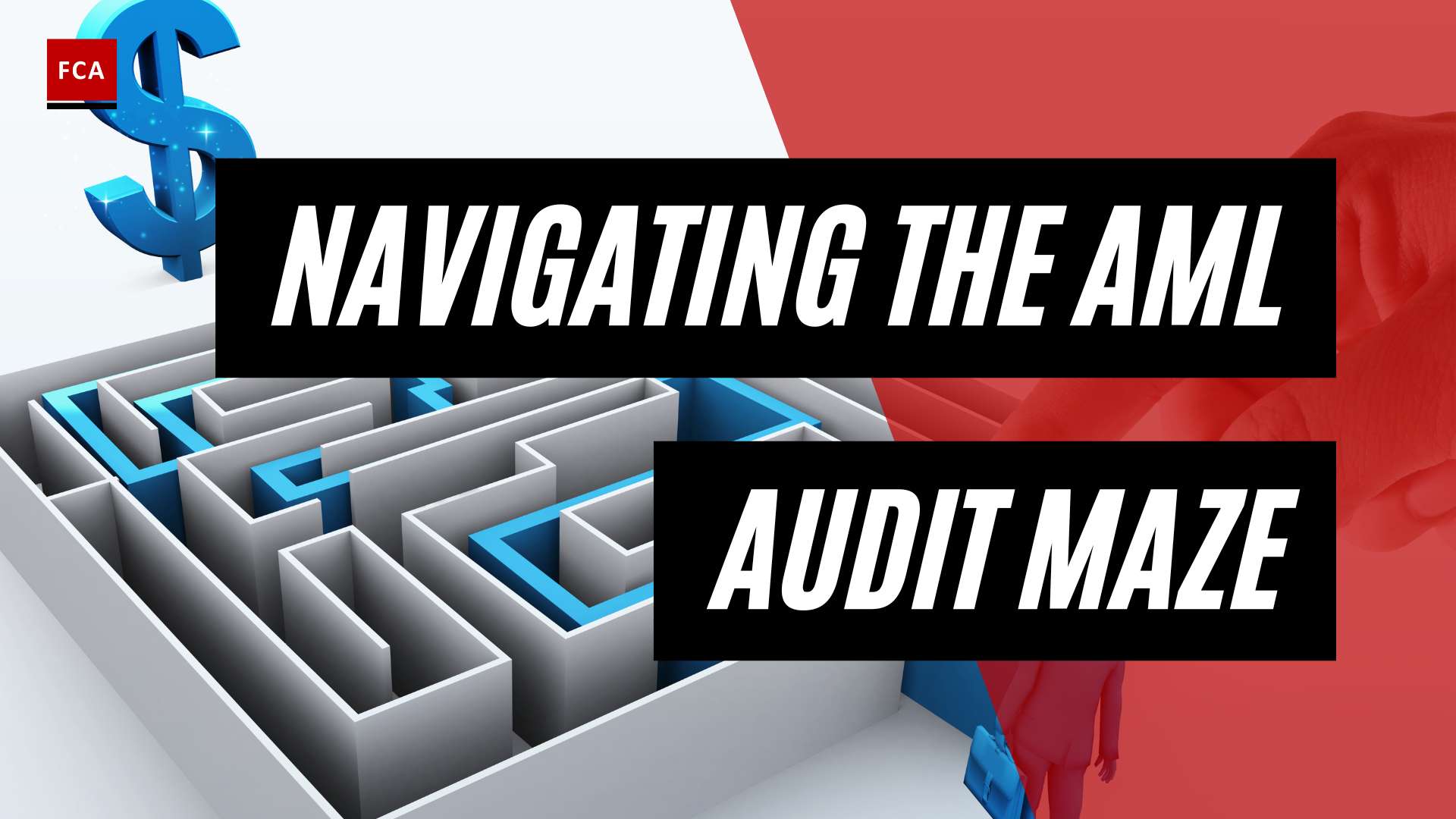Understanding FATF Recommendations
To effectively combat money laundering and terrorist financing, financial institutions worldwide adhere to the FATF Recommendations. These recommendations, introduced by the Financial Action Task Force (FATF), have played a pivotal role in shaping global anti-money laundering (AML) strategies.
Introduction to FATF
Established in 1989, the FATF is an intergovernmental organization that sets international standards and promotes the implementation of effective measures to combat money laundering, terrorist financing, and other related threats. Its primary objective is to protect the integrity and stability of the global financial system. The FATF comprises 39 member countries and jurisdictions, along with regional organizations and observer countries.
Evolution of FATF Recommendations
The FATF Recommendations have evolved over time to address emerging risks and challenges. The journey began with the introduction of the “40 Recommendations” in 1990, which focused on preventive measures, regulatory measures, and international cooperation. Subsequently, in response to the evolving nature of terrorist financing, the FATF introduced the “Eight Special Recommendations on Terrorist Financing” in 2001.
In 2012, the FATF revised and consolidated its recommendations into a comprehensive set of 40 Recommendations, which remain in effect today. These recommendations cover a wide range of topics, including customer due diligence, risk assessment, beneficial ownership, and measures against money laundering and terrorist financing.
The FATF Recommendations have had a significant impact on global AML efforts. They have prompted countries to swiftly adopt and integrate these standards into their legal and regulatory frameworks, resulting in a harmonized approach to combating financial crime. By implementing the FATF Recommendations, countries strengthen their AML regimes and contribute to a more robust global financial system.
Understanding the evolution of FATF Recommendations is crucial for financial institutions as they navigate the complex landscape of AML compliance. By adhering to these standards, institutions can demonstrate their commitment to combating financial crime and protecting the integrity of the financial system.
Importance of FATF Recommendations
Financial institutions play a pivotal role in combating money laundering and terrorist financing. The Financial Action Task Force (FATF) has developed a comprehensive set of recommendations to guide financial institutions in their efforts to prevent illicit activities and ensure the integrity of the global financial system. Understanding the importance of these FATF recommendations is crucial for financial institutions.
Implications for Financial Institutions
Compliance with the FATF recommendations is not merely a regulatory obligation; it is a fundamental aspect of maintaining trust, reputation, and credibility for financial institutions. Non-compliance can lead to severe consequences, including reputational damage, hefty fines, and in extreme cases, criminal prosecution (Financial Crime Academy). The consequences of non-compliance extend beyond financial implications, impacting the trust of stakeholders, customers, and the overall integrity of the financial system.
Financial institutions that adhere to the FATF recommendations demonstrate their commitment to combating financial crime, protecting their customers, and mitigating risks. Compliance helps establish a robust framework for detecting and reporting suspicious transactions, conducting proper due diligence, and implementing effective risk mitigation measures. By following these recommendations, financial institutions contribute to the stability and security of the global financial system.
Consequences of Non-Compliance
Non-compliance with the FATF recommendations can have serious repercussions for financial institutions. Regulatory authorities conduct regular audits and assessments to ensure institutions are meeting these standards. Failure to comply may result in enforcement actions, such as fines, penalties, or even license revocation. These consequences not only carry significant financial costs but also damage the institution’s reputation and credibility.
Financial institutions should prioritize the implementation of robust internal controls and procedures to avoid non-compliance. This includes establishing effective anti-money laundering (AML) and counter-terrorist financing (CFT) programs, conducting comprehensive customer due diligence (CDD), implementing risk assessment and mitigation measures, and fostering a strong compliance culture throughout the organization.
To mitigate the risks of non-compliance, financial institutions should invest in training and awareness programs to ensure employees understand their role in compliance with the FATF recommendations. Regular training sessions and updates on regulatory developments help employees stay informed and equipped to identify and report suspicious activities. By fostering a culture of compliance, financial institutions can minimize the likelihood of non-compliance and protect themselves from the associated consequences (Financial Crime Academy).
In summary, financial institutions cannot afford to overlook the importance of complying with the FATF recommendations. Adhering to these standards not only helps mitigate the risks of financial crime but also safeguards the institution’s reputation, credibility, and overall integrity of the financial system. By embracing these recommendations, financial institutions demonstrate their commitment to combating illicit activities and contributing to a secure and transparent global financial environment.
Key Elements of FATF Recommendations
To combat money laundering and terrorist financing, the Financial Action Task Force (FATF) has established a set of recommendations that financial institutions must adhere to. These recommendations encompass various aspects of anti-money laundering (AML) and counter-terrorist financing (CFT) measures. Two key elements of the FATF recommendations are the Customer Due Diligence (CDD) process and risk assessment and mitigation measures.
Customer Due Diligence (CDD) Process
The CDD process is a fundamental component of AML compliance for financial institutions. It involves gathering and verifying customer information to identify and understand the risks associated with their financial transactions. The FATF recommends that financial institutions implement an effective CDD process to mitigate the risk of money laundering and terrorist financing.
The CDD process typically includes the following steps:
-
Customer Identification: Financial institutions are required to identify and verify the identity of their customers. This involves collecting documents, such as government-issued identification, and verifying the accuracy of the information provided.
-
Beneficial Ownership: Financial institutions should also identify and verify the beneficial owners of customer accounts. This helps to prevent the misuse of accounts by individuals who may be trying to conceal their true identities or engage in illicit activities.
-
Ongoing Monitoring: Financial institutions must conduct ongoing monitoring of customer relationships and transactions. This involves reviewing and analyzing customer activity to detect any suspicious or unusual transactions that may indicate money laundering or terrorist financing.
By implementing a robust CDD process, financial institutions can effectively assess the risk associated with their customers and transactions, enabling them to take appropriate measures to prevent and detect illicit activities. For more information on the FATF recommendations related to beneficial ownership, please refer to our article on FATF recommendations for beneficial ownership.
Risk Assessment and Mitigation Measures
Financial institutions are required to conduct risk assessments to identify and understand the specific risks they may face in relation to money laundering and terrorist financing. The FATF recommends that financial institutions regularly assess these risks and develop appropriate mitigation measures.
The risk assessment process involves:
-
Identifying Risks: Financial institutions should identify the potential risks they may face based on their customer base, products and services offered, and the jurisdictions they operate in. This includes assessing the risks associated with new technologies, such as virtual assets, crypto-assets, and stablecoins, which can introduce additional challenges (FATF Report).
-
Assessing Severity: Financial institutions should assess the severity of the identified risks by considering factors such as the likelihood of occurrence, potential impact, and regulatory requirements.
-
Implementing Mitigation Measures: Based on the risk assessment, financial institutions should implement appropriate measures to mitigate the identified risks. This may include enhanced due diligence for high-risk customers, transaction monitoring systems, and training programs for staff to ensure they are aware of the latest AML and CFT requirements.
Regularly reviewing and updating the risk assessment is crucial to adapt to evolving risks and changing regulatory landscapes. By implementing effective risk mitigation measures, financial institutions can minimize the likelihood of being exploited for illicit activities. For more information on the FATF recommendations related to risk assessment, please refer to our article on FATF recommendations for risk assessment.
Adhering to the key elements of the FATF recommendations, specifically the CDD process and risk assessment and mitigation measures, is essential for financial institutions to effectively combat money laundering and terrorist financing. By implementing robust AML and CFT measures, financial institutions contribute to the integrity of the global financial system and help protect against illicit activities.
Addressing New Technologies in AML Compliance
As the financial landscape evolves, new technologies have emerged, presenting both risks and opportunities for financial institutions in their efforts to combat money laundering and terrorist financing. The Financial Action Task Force (FATF) recognizes the need for financial institutions to address these challenges and has provided guidelines to ensure compliance with FATF recommendations in the context of new technologies.
Risks and Challenges of New Technologies
New technologies, such as virtual assets, crypto-assets, and stablecoins, have introduced unique risks to the financial sector. These risks include anonymity, lack of transparency, and the potential for money laundering and terrorist financing (FATF Report). Financial institutions must be vigilant in understanding and mitigating these risks to maintain the integrity of the financial system.
One of the key challenges posed by new technologies is the difficulty in performing effective customer due diligence (CDD) processes. The nature of these technologies often allows for pseudonymous or anonymous transactions, making it challenging to identify the individuals involved and assess the associated risks. Financial institutions must adapt their risk assessment frameworks to account for these challenges and implement robust CDD processes that are effective in reducing the risks of money laundering and terrorist financing (FATF Report).
Effective Measures for New Technology Adoption
To address the risks associated with new technologies, financial institutions should consider implementing the following measures:
-
Ongoing Monitoring: Financial institutions should adopt effective transaction monitoring systems to detect and report suspicious activities associated with new technologies. This includes monitoring customer behavior and transactions, particularly those involving virtual assets, crypto-assets, and stablecoins. Regularly reviewing and updating risk assessments is essential to ensure that monitoring systems remain effective in identifying potential illicit activities (FATF Report).
-
Public-Private Partnerships: Building strong public-private partnerships is crucial in addressing the challenges posed by new technologies. Collaboration between financial institutions, regulators, law enforcement agencies, and other relevant stakeholders fosters a multi-disciplinary approach to effectively combat money laundering and terrorist financing. Sharing information and expertise can enhance the understanding and response to emerging risks.
-
International Standards and Guidelines: Financial institutions must ensure the effective implementation of international standards, regulations, and guidelines to mitigate risks associated with new technologies. Compliance with FATF recommendations and other relevant regulatory frameworks is essential in enhancing the integrity of the financial system globally. Staying up to date with evolving standards and guidelines is crucial to adapt to the dynamic nature of new technologies (FATF Report).
By addressing the risks and challenges associated with new technologies, financial institutions can enhance their anti-money laundering (AML) compliance frameworks and strengthen their ability to detect and prevent illicit financial activities. Embracing effective measures, such as ongoing monitoring, public-private partnerships, and adherence to international standards, will contribute to a more robust and resilient financial system.
Enhancing AML/CFT Measures
To effectively combat money laundering and terrorist financing, financial institutions must prioritize enhancing their Anti-Money Laundering (AML) and Countering the Financing of Terrorism (CFT) measures. This involves implementing robust training and awareness programs, as well as fostering information sharing and collaboration within the industry.
Training and Awareness Programs
Financial institutions play a crucial role in ensuring compliance with the FATF recommendations for AML/CFT. To achieve this, it is essential to invest in comprehensive training and awareness programs for employees. These programs should educate employees about their responsibilities, the latest trends in financial crime, and the specific requirements outlined by the FATF.
By providing regular training sessions, financial institutions can keep their staff informed about emerging risks and evolving regulatory frameworks. Training programs should cover topics such as customer due diligence, transaction monitoring, and suspicious activity reporting. Additionally, employees should be trained on the effective use of new technologies, such as artificial intelligence and machine learning, to enhance the effectiveness of AML/CFT measures (FATF). This ensures that employees are equipped with the necessary skills to implement AML/CFT measures in compliance with the FATF recommendations.
Financial institutions should also establish clear procedures for reporting suspicious activity and provide channels for employees to seek guidance or report concerns. By fostering a culture of compliance and vigilance through training and awareness programs, financial institutions can mitigate the risks associated with non-compliance and contribute to a robust AML/CFT framework.
Information Sharing and Collaboration
To effectively address the challenges posed by financial crime, information sharing and collaboration among financial institutions are crucial. The FATF encourages financial institutions to foster strong public-private partnerships and engage in collaboration with relevant authorities and industry stakeholders. This multi-disciplinary approach enables the exchange of information, best practices, and lessons learned, ultimately strengthening the fight against money laundering and terrorist financing (FATF Report).
Financial institutions should actively participate in information-sharing platforms, such as Financial Intelligence Units (FIUs) and industry associations. These platforms facilitate the sharing of intelligence, typologies, and emerging trends, allowing financial institutions to stay ahead of evolving financial crime threats. By collaborating with other institutions, financial intelligence agencies, and regulators, financial institutions can collectively enhance their ability to detect, prevent, and report suspicious activities.
Moreover, financial institutions should leverage technology to enable secure and efficient information sharing while adhering to data privacy and protection regulations. By harnessing the power of technology, financial institutions can establish effective communication channels and share relevant information in a timely manner, contributing to a more coordinated and proactive approach to combatting financial crime.
By prioritizing training and awareness programs and fostering information sharing and collaboration, financial institutions can enhance their AML/CFT measures and contribute to the global efforts in combating money laundering and terrorist financing. These proactive steps not only help institutions comply with the FATF recommendations but also strengthen the integrity of the financial system as a whole.
Global Impact of FATF Recommendations
The FATF recommendations have had a significant global impact, influencing national policies and shaping the global landscape for anti-money laundering (AML) and countering the financing of terrorism (CFT) efforts. Let’s explore two key areas of impact: influence on national policies and the establishment of Financial Intelligence Units (FIUs).
Influence on National Policies
The FATF recommendations have triggered a wave of change in national policies, practices, and mindsets across the globe. These recommendations serve as international standards for AML and CFT measures, providing a framework for countries to combat money laundering and terrorist financing effectively. Nations have swiftly adopted and integrated these standards into their legal and regulatory systems, aligning their policies with the FATF recommendations.
To adhere to the FATF standards, countries have enhanced international cooperation, adopting sophisticated techniques to combat money laundering and terrorist financing. They have also subjected themselves to mutual evaluations as part of the peer-review system to ensure compliance with the recommendations. This global alignment facilitates the exchange of information and strengthens the collective efforts in combating financial crime (FlagRight).
Establishment of Financial Intelligence Units (FIUs)
A pivotal recommendation from the FATF led to the establishment of Financial Intelligence Units (FIUs) in many nations. FIUs serve as centralized national bodies responsible for receiving, processing, and analyzing information related to suspicious transactions. These units play a crucial role in the fight against money laundering and terrorist financing.
FIUs act as a bridge between financial institutions and law enforcement agencies, facilitating the timely exchange of information. By analyzing suspicious activity reports and other financial intelligence, FIUs contribute to the detection and prevention of financial crimes. The establishment of FIUs has strengthened the overall AML/CFT framework and improved the effectiveness of efforts to combat money laundering and terrorist financing (FlagRight).
By influencing national policies and promoting the establishment of FIUs, the FATF recommendations have played a vital role in shaping global AML and CFT strategies. The continued adherence to these recommendations ensures a coordinated and comprehensive approach to combating financial crime on an international scale.
To learn more about the specific recommendations put forth by the FATF, you can refer to our article on FATF recommendations summary. Additionally, for a deeper understanding of how these recommendations impact AML compliance in financial institutions, visit our article on FATF recommendations for AML compliance.
Ensuring Compliance with FATF Standards
To maintain integrity within the global financial system and combat money laundering and terrorist financing, financial institutions must ensure compliance with the FATF (Financial Action Task Force) standards. Adhering to these standards requires effective implementation of various measures, including international cooperation and mutual evaluations, as well as the implementation of robust KYC (know your customer) and KYB (know your business) protocols.
International Cooperation and Mutual Evaluations
International cooperation plays a critical role in combating financial crime and ensuring compliance with FATF standards. Countries collaborate with each other to share information, coordinate investigations, and exchange best practices. This cooperation helps identify and address cross-border money laundering and terrorist financing activities.
To promote adherence to FATF standards, countries subject themselves to mutual evaluations as part of the peer-review system. During these evaluations, independent assessors thoroughly review a country’s implementation of the FATF recommendations. The evaluation process assesses the effectiveness of a country’s anti-money laundering and counter-terrorist financing measures, identifies areas for improvement, and encourages the sharing of best practices.
Role of KYC and KYB Protocols
The FATF recommendations emphasize the importance of robust KYC (know your customer) and KYB (know your business) protocols. These protocols require financial institutions to verify the identity of their customers and understand the nature of their business relationships. By implementing KYC and KYB procedures, financial institutions can mitigate the risk of money laundering and terrorist financing.
KYC protocols involve collecting and verifying customer information, such as identification documents, address verification, and beneficial ownership details. This information helps institutions assess the risk associated with each customer and detect any potential red flags. By understanding their customers better, financial institutions can monitor transactions effectively and identify suspicious activities.
KYB protocols, on the other hand, focus on understanding the business relationships that financial institutions have with their clients. This includes gathering information about the ownership structure, business activities, and sources of funds of corporate customers. By conducting thorough due diligence on business relationships, financial institutions can identify potential risks and prevent illicit activities.
Implementing effective KYC and KYB protocols requires financial institutions to establish robust internal processes, invest in technology solutions, and provide comprehensive training to employees. These protocols ensure that financial institutions have a clear understanding of their customers and business relationships, enabling them to fulfill their obligations and contribute to the global fight against financial crime.
By prioritizing international cooperation and implementing strong KYC and KYB protocols, financial institutions can ensure compliance with FATF standards. Adhering to these standards not only helps protect the integrity of the financial system but also safeguards institutions from reputational damage, hefty fines, and potential criminal prosecution that may arise from non-compliance (FlagRight) (Financial Crime Academy).








